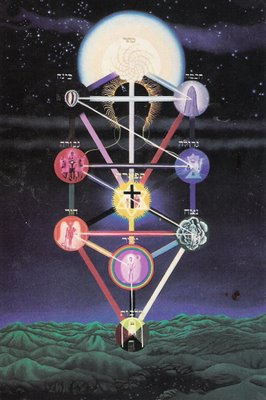At times, I marvel at the fact that I exist.
What a great difference, a great void, there is between this dancing flame of life and the utter silence of nothingness and not protesting against one's non-existence, because if you are not, can you cry out to be?
Ernest Boyer held his first child minutes after he had emerged and wondered to himself:
Here, out of nowhere, was a life. Where had it been in all those tens of thousands of years while other human beings were born, lived and died and civilisations grew, flourished and declined? Where had this life been then? And where was it going? What lay ahead for him in childhood, youth, and adulthood? And what was beyond? Where would he be in the eternal sequence of centuries that were still ahead? In a great wave of wonderment these questions washed over me, slowly to be replaced with something else, a feeling calmer, still.
Michael, in Young People’s Parables, remarks that it was the day he saw a caged tiger, frustrated by captivity in spite of its magnificent strength, that he grasped the meaning of the freedom embodied in his life.
The river flows but the boatman must determine in what direction he will steer his boat.
In the Kabbalah,Kether is understood as the first manifest.It is the first point of existence that constitutes the universe as can be known by human beings.The zone out of which it emerged,Ain Soph,is described as the Great Unmanifest,and as such is conceived as being beyond thought and knowledge.Since even thought and imagination represent abstract forms of manifestation,the nature of Ain Soph,which can not be conceived in thought or imagination, is not within the range of human perception.It corresponds to a Buddhist conception of Nirvana as neither being nor non-being.
At the beginning, there was a huge drop of milk.
Then Doondari came and he created the stone.
Then the stone created iron;
And iron created fire;
And fire created water;
And water created air.
Then Doondari descended the second time.
And he took the five elements
And he shaped them into man.
But man was proud,
Then Doondari created blindness and blindness defeated man.
But when blindness became too proud,
Doondari created sleep, and sleep defeated blindness;
But when sleep became too proud,
Doondari created worry, and worry defeated sleep;
But when worry became too proud,
Doondari created death, and death defeated worry.
But when death became too proud,
Doondari descended for the third time,
And he came as Gueno, the eternal one
And Gueno defeated death.
At the beginning there was a huge drop of milk
I reflected on these words this morning, surrounded by my books, the embodiment of my hopes, as well as the expression of what I want to grow beyond, a life where books and ideas are the most intimate companions. My bed is huddled in a corner and almost fenced in by piles of books. I gaze at them and they remind me about the sacrifices I am undergoing in being here in England, sacrifices occasioned by the opportunity to study here, but which has led to an upheaval in my life of such magnitude that its is clear that the distortions of reality represented by the description of the master of paradox of whom it is said that “He is so tall that only the tufts of his hair can be seen” are clearly at play
But within the arena circumscribed by these books, by this reversion to bachelorhood, I hope to realize dreams that till now have been aborted by untoward factors.
That is where the drop of milk comes in.
Milk, that nourishes us as we come to life, becomes suggestive of the potentiality for nourishment, for new growth, that resides in our circumstances, in ourselves. As the symbol of the primal sustaining power that enabled the universe to be, it becomes the expression, the symbol, of the generative possibilities that empower us.
The bottleneck into which I have been forced by the circumstances of this entry into the human world squeeze me so hard;the pain is so excruciating,even more gut squeezing for roiling itself in the inner chambers of the self where self doubt and the quest for a way to right perceived injustice against the self are entangled like self replicating snakes.Shall we expire into the unknown that waits beyond the abyss of knowledge at the end of the tunnel of this life?No.We shall live.An African poet declares "The firewood-a central pretechnological form of fuel-of this world is not for the weak."






